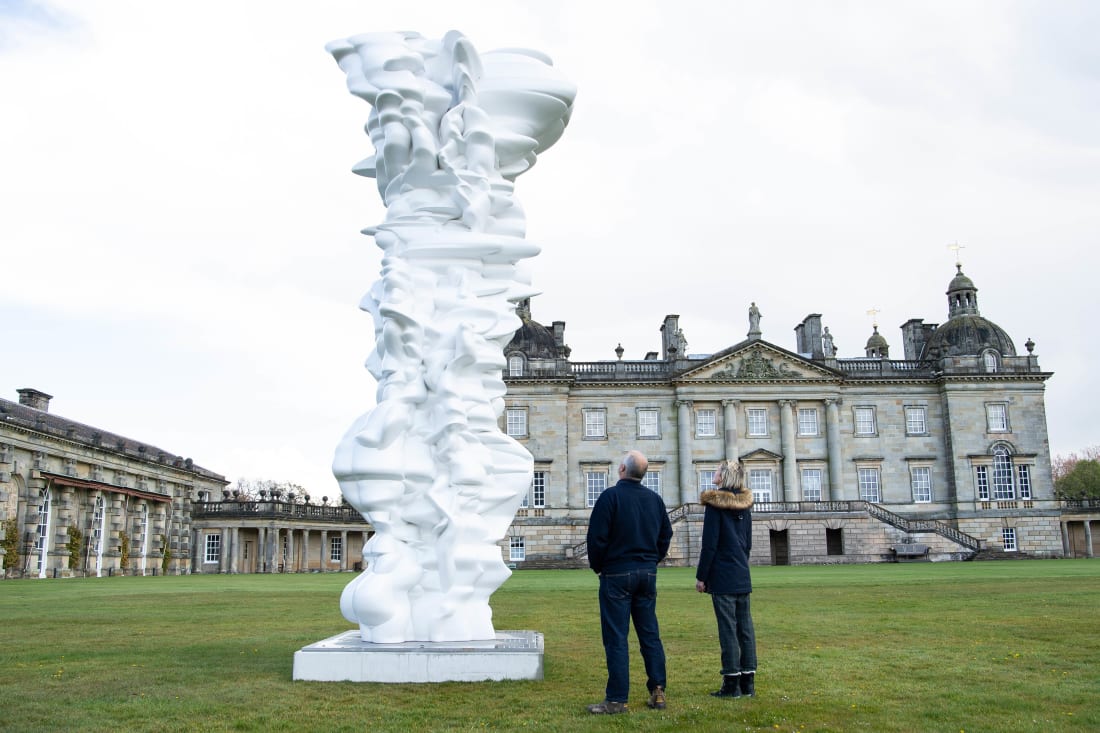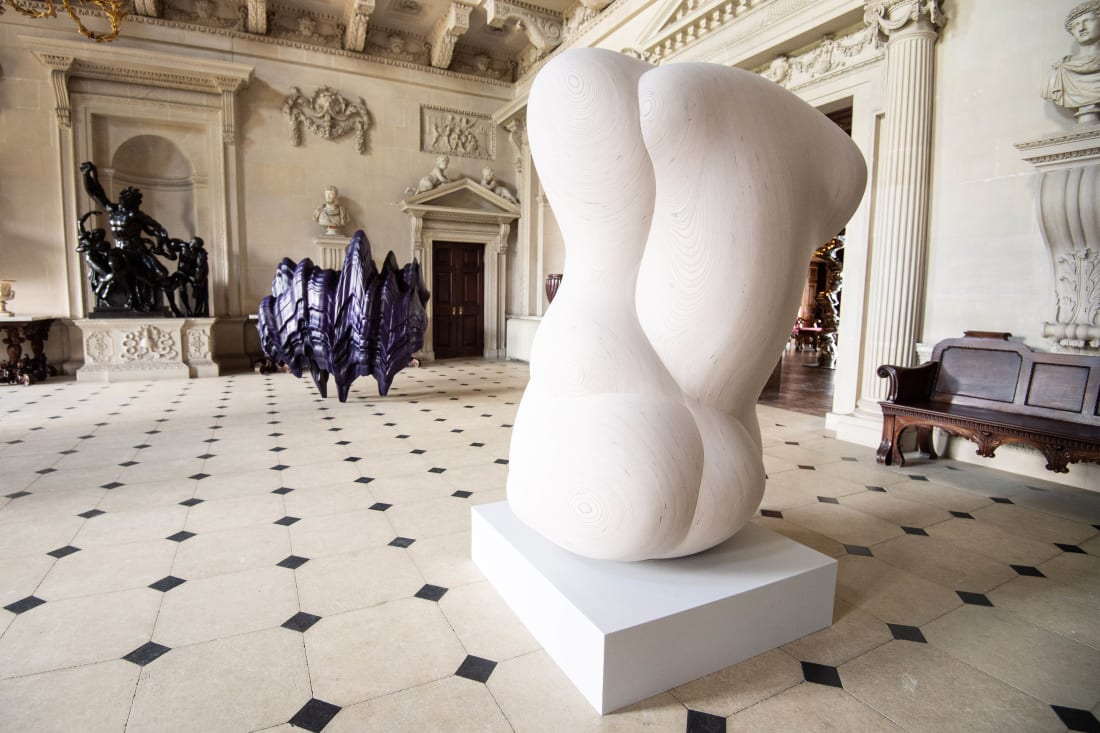Tony Cragg Tony Cragg at Houghton
'Sculpture gives us new forms, new ideas and new emotions. It literally gives things meaning and opens new perspectives.' Tony Cragg, 2021
Tony Cragg at Houghton Hall is a survey exhibition spanning the artist's work over the past decade with a particular focus on his most recent works, including new sculptures that have never before been shown in public.
The exhibition, curated by Jon Wood, will include large-scale bronze and steel sculptures sited in Houghton Hall's gardens and grounds, with smaller pieces shown in the State rooms and gallery spaces of the house.
A self-described ‘radical materialist’, Tony Cragg constantly explores new materials and their expressive possibilities, as well as complex relationships between the natural and material world. As he has explained, ‘we are the result of our material surroundings and the appearance or form we have taken is due to the particular circumstances of our existence […] Material is what we are made of and where we originated’.
The artist's recent works suggest the movement and transience of elements caught in the process of transformation, as in stainless steel forms that convey the fluidity of molten metal. A palpable sense of movement is conveyed through a number of the monumental works to be installed at Houghton Hall, and the implied motion of these biomorphic sculptures is reminiscent of the Italian Futurists, while the verticality of his Mean Average (2018) recalls Constantin Brâncuși (1876–1957), who similarly arrived at a reduction of natural forms through his unique approach to abstraction.
Influenced by Land Art and Arte Povera, Cragg's early works were accumulations of found objects and waste materials, including discarded furniture, machine parts and glass or plastic bottles. The materials were ordered according to precise systems and he later applied the same stacking principles to thin layers of wood to form undulating organic structures. These recall natural geological forms, such as the sedimentation of mineral particles to create strata or the weathering of rock by the forces of wind and water.
Nature with all its structures, from micro to macro, has also been the dominant theme of Tony Cragg’s work over the past ten years. His intention has never been to copy from nature, but rather to discover the ideas and emotions that different materials and forms can evoke. The interplay between positive and negative space is a structuring principle in his sculptures, whether in the perforations that lighten the mass of Ferryman (2001) or the interpenetrating forms of Runner (2015) that map out the spaces between them.
Tony Cragg has been working and exhibiting since 1969. He participated in documenta 7 and 8 and represented Britain at the Biennale in Venice in 1988. He was awarded the Turner Prize in 1988, the prestigious Praemium Imperiale Award, Tokyo in 2007 and the Lifetime Achievement in Contemporary Sculpture Award in 2017. He has lived in Wuppertal, Germany, since 1977.
He held professorships in the Akademie der Künste in Berlin and Kunstakademie Düsseldorf, where he was director from 2009 to 2013. He has exhibited extensively in museums worldwide: Tate Gallery, London (1988), Stedelijk Van Abbemuseum, Eindhoven and Kunstsammlung Nordrhein-Westfalen, Duesseldorf (1989), Scottish National Gallery of Modern Art, Edinburgh and Musée du Louvre, Paris (2011), Lehmbruck Museum, Duisburg (2013), Von der Heydt-Museum, Wuppertal and Hermitage Museum, St Petersburg (2016) and Boboli Gardens, Florence (2019)
Lord Cholmondeley, owner of Houghton, said:
“Tony Cragg at Houghton will be the 6th contemporary art exhibition held at Houghton since 2015. I am particularly grateful to Tony for the chance to show his sculptures here in Norfolk, and for agreeing to curate the exhibition himself. I have always been a great admirer of his work, and it will be incredibly exciting to see how it will come together and interact with the historic landscape and interiors of Houghton. As life is no longer, for the moment, as we once knew it due to the challenges of COVID 19, we have been faced with some extraordinary logistical problems; not least transporting exhibits to the UK from Tony’s studio in Germany. I would especially like to thank Dorotheum and Thaddaeus Ropac Gallery for their support as this year’s exhibition sponsors.’’
Houghton Hall was built by Sir Robert Walpole, Great Britain’s first Prime Minister in around 1722. Designed by prominent Georgian architects Colen Campbell and James Gibbs, it is one of the country’s finest examples of Palladian architecture. Houghton and its estate passed to the Cholmondeley family at the end of the 18th Century and remains a family home. The house and award-winning gardens have been open to the public since 1976.
The exhibition is presented by the Houghton Arts Foundation. HAF continues to build a collection of contemporary art in the grounds of Houghton Hall, including a number of site-specific commissions. With links to colleges and public institutions across the region, the Foundation’s aim is for Houghton to become a focus for those who wish to see great art of our time in a historic setting. Tony Cragg at Houghton follows exhibitions of work by James Turrell (2015), Richard Long (2017), Damien Hirst (2018), Henry Moore (2019) and Anish Kapoor (2020).


























































































































































































